Avena+ Test Bed - Agricultural Printing and Altered Landscapes by Benedikt Groß
Royal College of Art graduate Benedikt Groß has digitally "printed" a field with a pattern of oats and wild flowers (+ movie).
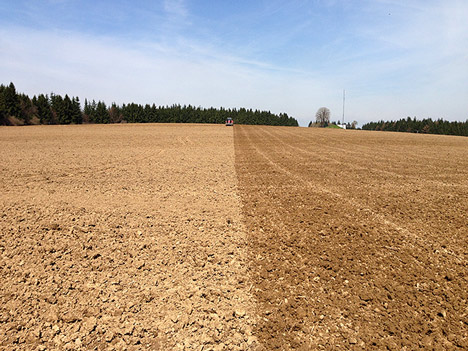
He began by investigating how digital technology is transforming farming. "You could say in the last 50 years everything was about mechanisation to increase scale and efficiency, but the next thing in farming is digitalisation and precision farming, where everything is going to be mapped right down to the single plant," Benedikt Groß told Dezeen.
He explained that precision farming is already being used to apply exactly the right amounts of fertiliser or pesticides to specific parts of a field rather than simply coating large areas.
"Farming becomes more like a digital process or a printing process with these kinds of technologies on board," he added. "Maybe a farmer in a few years is a person in front of a dashboard and is literally programming the landscape."
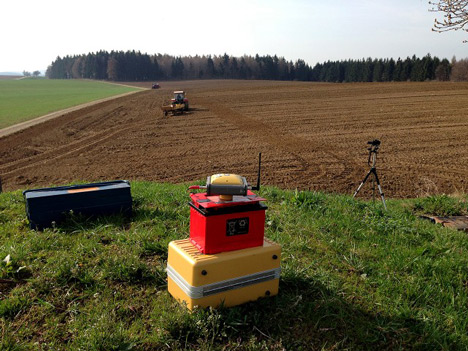
To investigate how precision farming technologies might affect the look of that landscape, the designer decided to tackle problems associated with modern monoculture farming by controlling the mix of plants in a field and sowing them in the most efficient pattern. "If you have more diversity then you have to use less pesticides and have less problems with vermin," he explained.
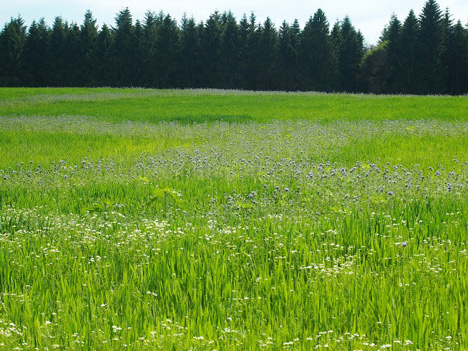
To test the process on a field in Germany, the outline of the area was first mapped using a tractor and GPS tracking. Groß then used custom software to determine the most effective layout, dividing the field into patches so 85% of the area would be covered by crops for biomass and 15% of the field would be reserved for a mix of five different flowers.
"The algorithm divides the field into the right ratio of plants and then tries to create small partitions," he said. "The size and shape of that smaller partition tries to mimic traditional fields, when you had less of the problems associated with monoculture."
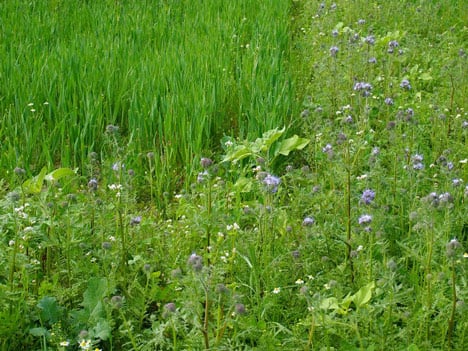
The seeds were then sown according to this pattern using specially-adapted farming equipment, mounted to a tractor and pulled back and forth across the field like the head of a printer. Groß assembled the machinery by repurposing equipment from farming research and development companies, adding his own software to control where the seed was dropped.
"About 95 per cent of the equipment is R&D or right from the shelf of two agricultural companies, so the equipment is not that far in the future," the designer said. "More or less everything was there and I just had to experiment in terms of joining the technologies together by writing some software."
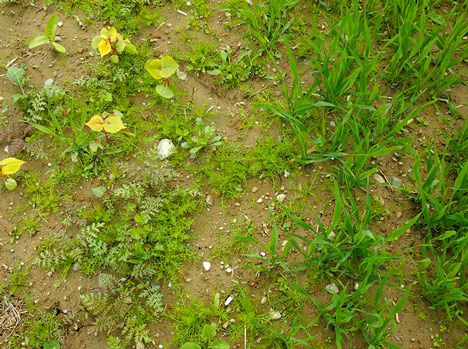
For the test run shown in the movie, the tractor had to pass over the field twice - once for the oats and once for the flowers - but Groß says the process could easily be completed with one pass if a hopper were mounted at either end of the tractor.
"It's definitely possible [to do it in one pass] because with modern tractors, normally you have one machine in front and one at the rear so you are able to do two things in one step," he said. "But the machine was 50,000 euros so it was not too easy to persuade them to get a second one for the trial."
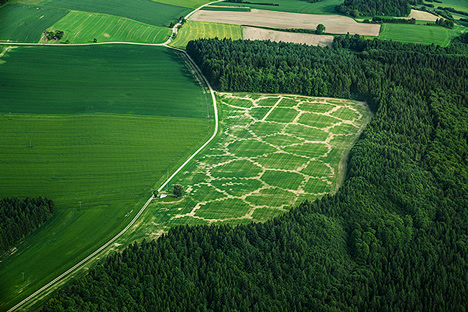
Although the technology is expensive at present - meaning only farmers with a lot of land can implement it - Groß is confident that the cost of equipment will come down as precision farming become more widespread. "In five or ten years the equipment I was adapting will be used every day."
His system also ties into a shift in arable farming from food production to energy production. "With plants grown for biomass you can have more diversity more easily," he said. "If you have a field for wheat it's really important that the wheat is really pure because in the end it's going to be bread, but with energy production it doesn't matter because everything goes in the same bin in a biomass factory."
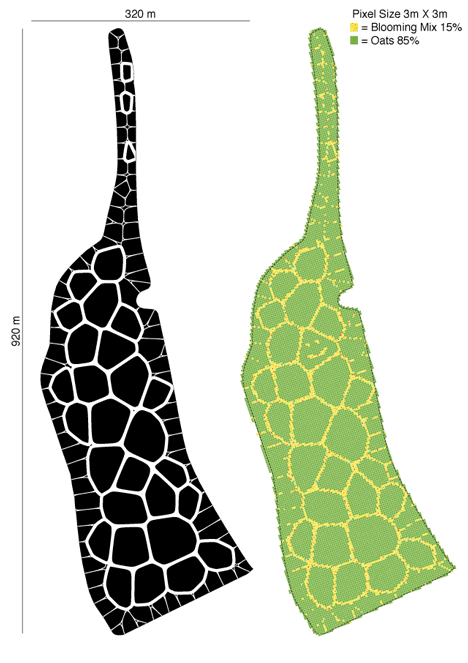
In addition, European Union subsidies promoting diversity in planting to combat monoculture issues could enable farmers to earn extra money by implementing his design. "With the flower mix I'm using, you can get subsidies - a few hundred euros per hectare I think," he said. "It's really plausible that a farmer could get subsidies on top of an energy production deal."
The first crop was made into biomass last month, and he's now looking to work with scientists to quantify the impact that his planting system has on the environment and farming practice.
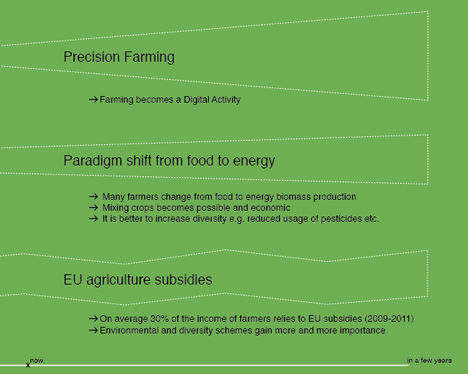
He started the project while studying on the Design Interactions course at London's Royal College of Art. Other projects displayed the Show RCA graduation show this summer included electrical products made from crab shells and food that wriggles around on the plate.
Other farming ideas on Dezeen include communities powered by faeces, electric eels and fruit and an urban farming project on a New York rooftop.
See more stories about farming and design »
See all our stories about Show RCA 2013 »